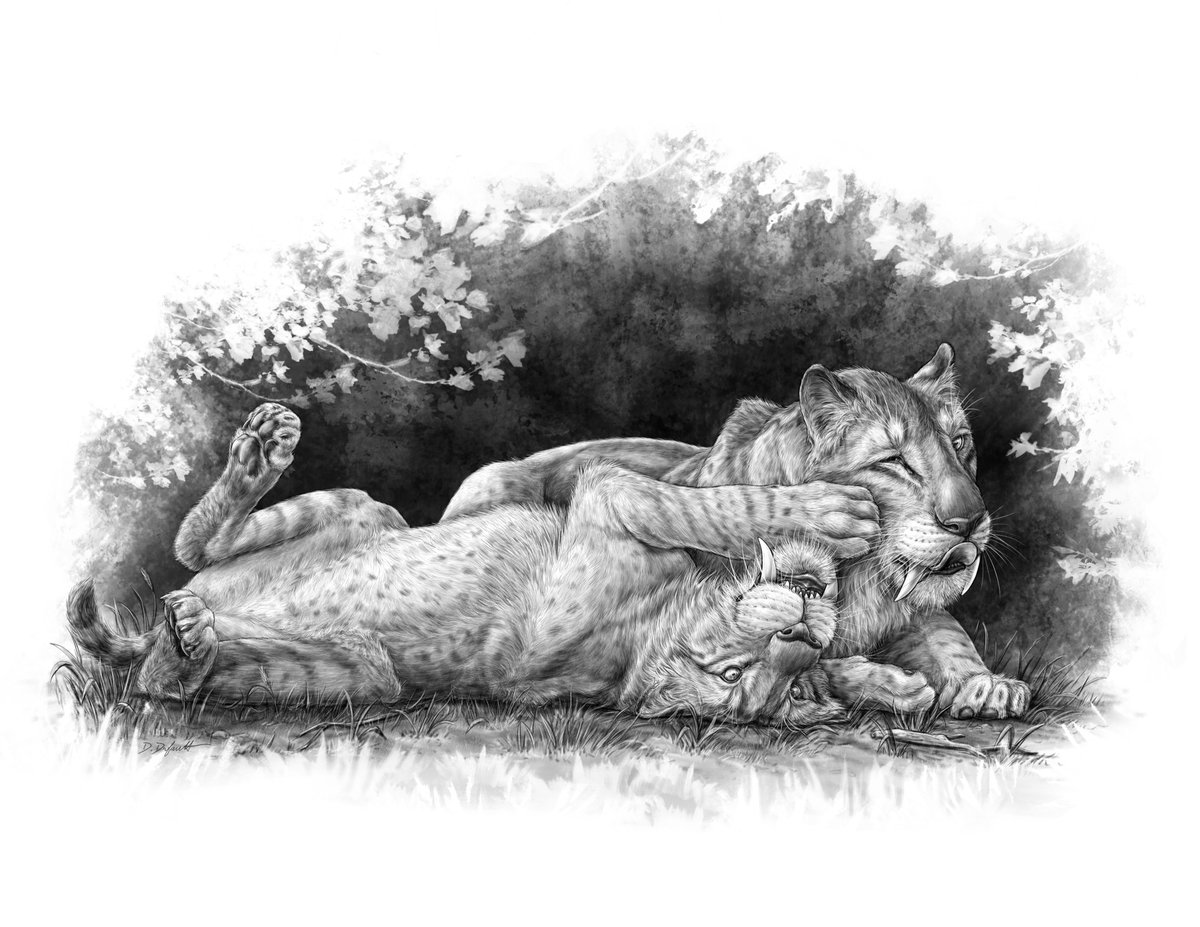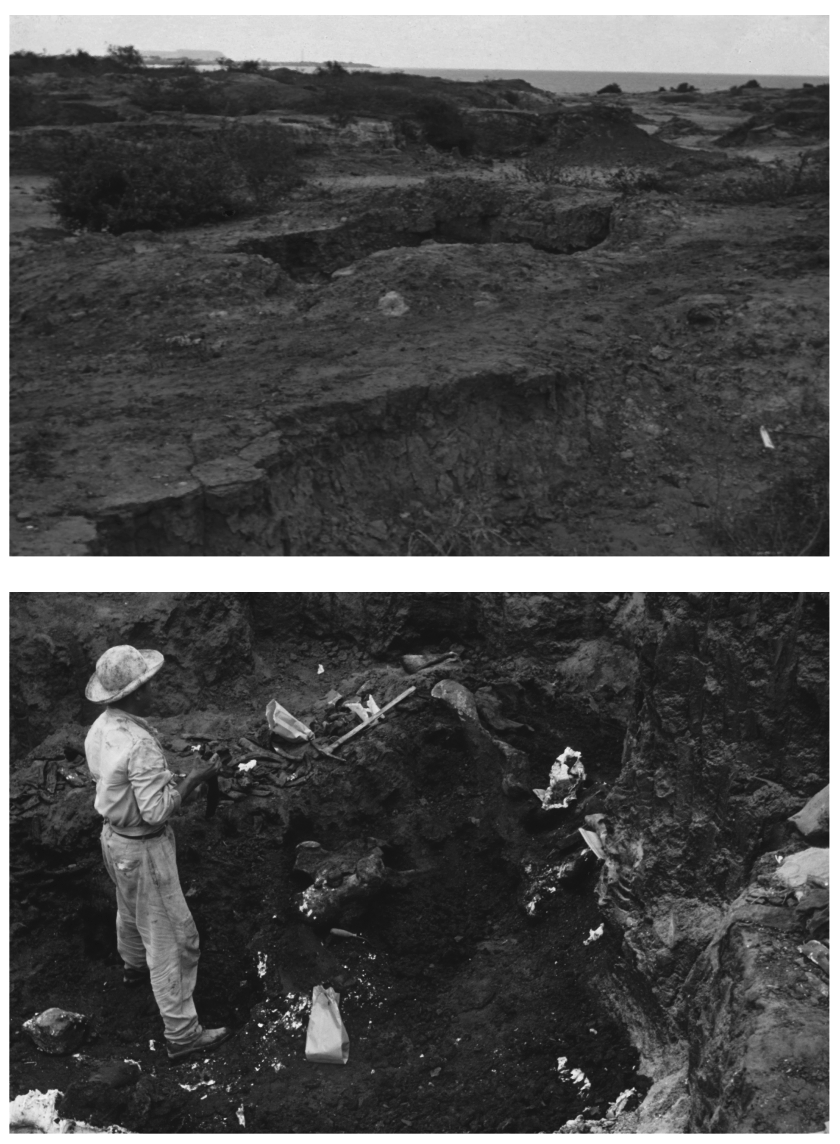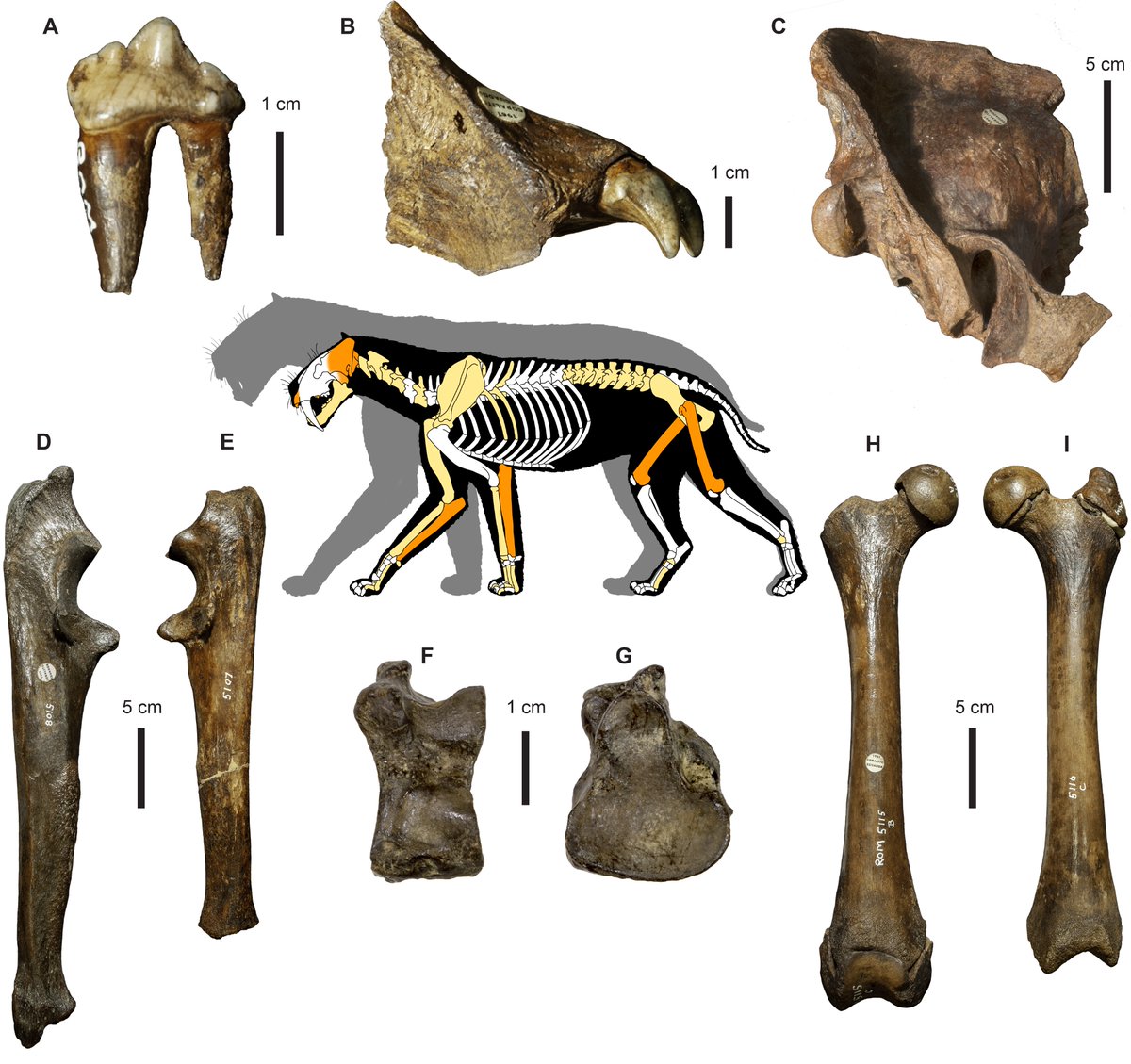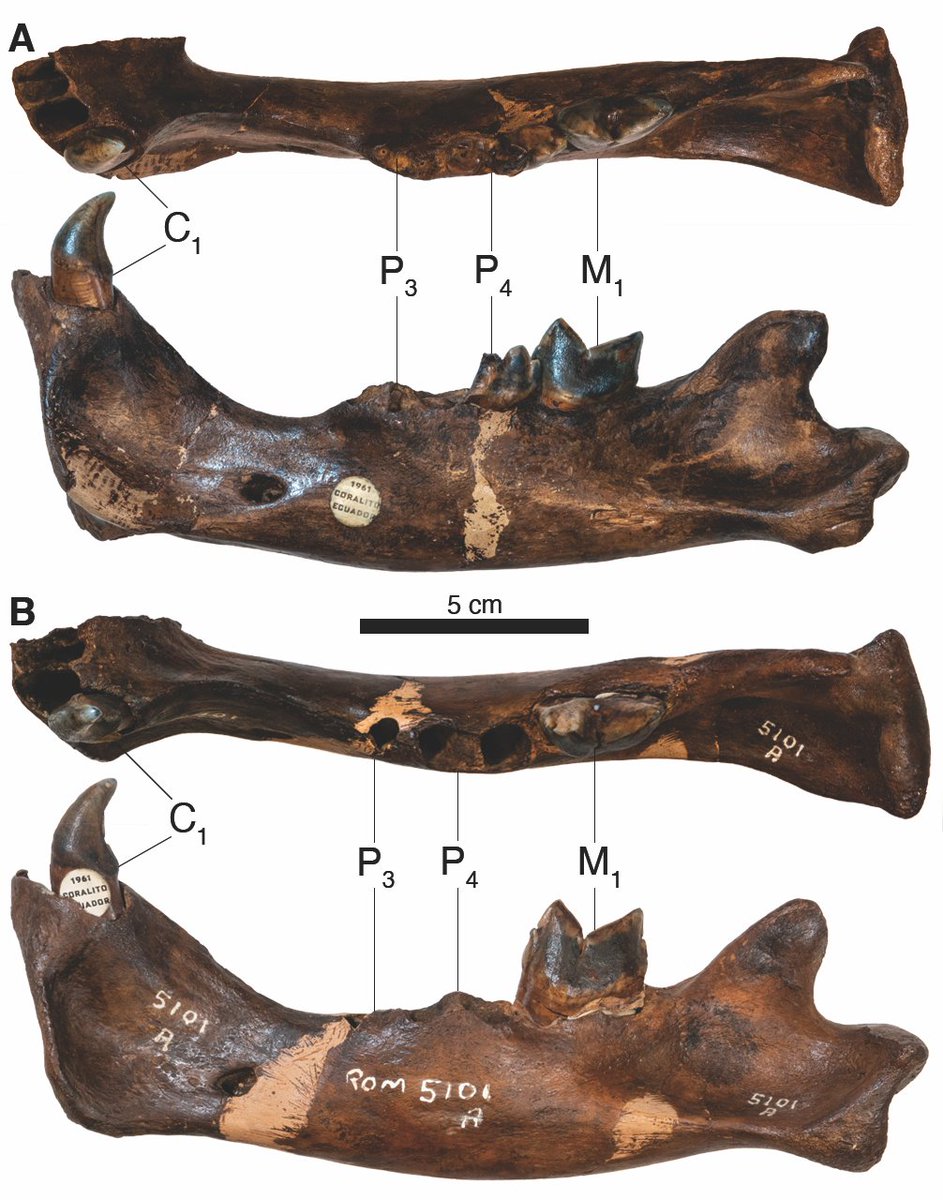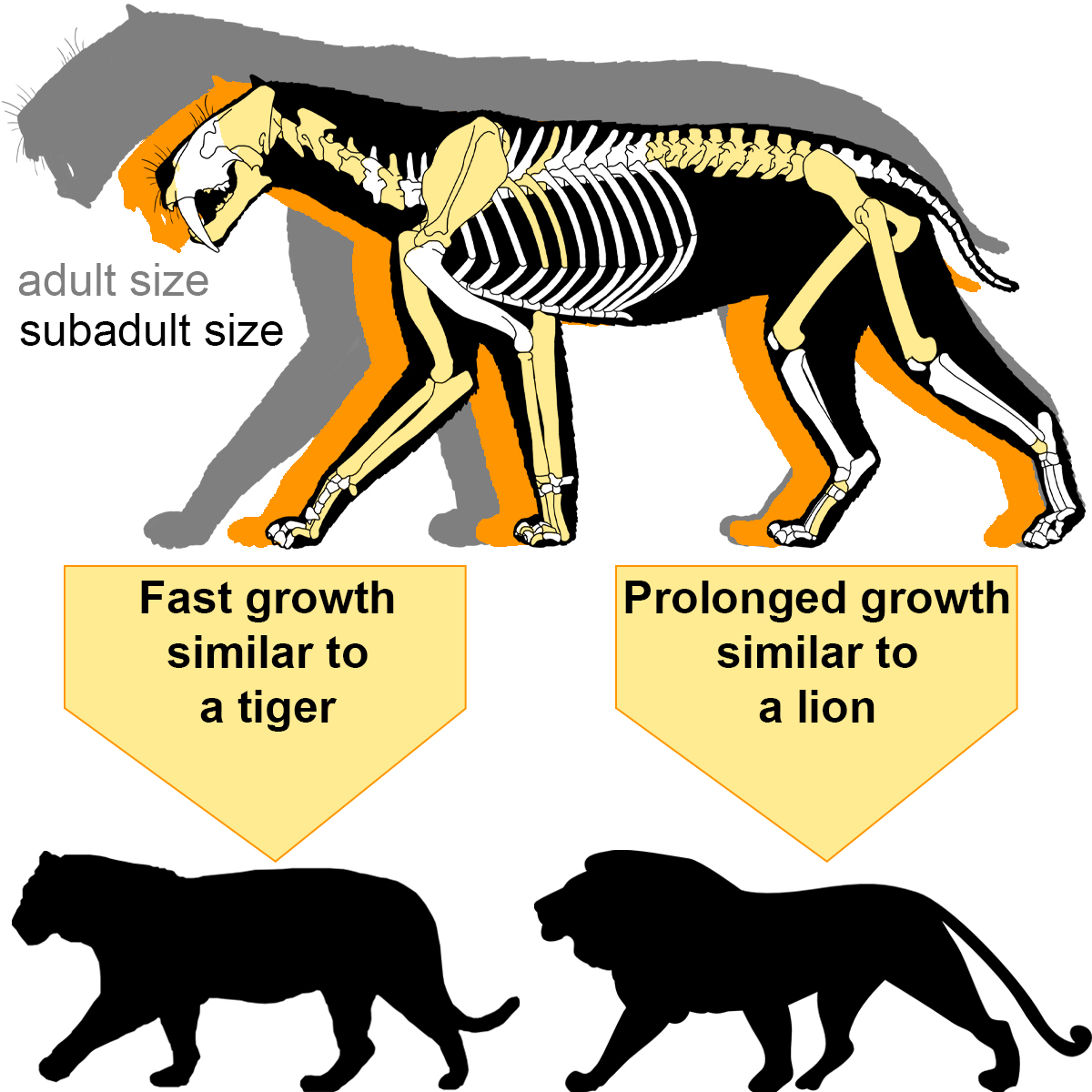I know things are A LOT right now, but hopefully this will bring a little joy: we just published on some sabrecat siblings and the story they tell about how long it took these fearsome predators to grow up.
FABULOUS artwork by @MesozoicMuse
Paper here: https://www.sciencedirect.com/science/article/pii/S2589004220311135
FABULOUS artwork by @MesozoicMuse
Paper here: https://www.sciencedirect.com/science/article/pii/S2589004220311135
The fossils come from a locality on the Santa Elena peninsula of Ecuador, called Coralito. The site is now part of a residential area, so we had to do some detective work using field notes, the literature, and small amounts of sediment we recovered from the inside of a skull.
What we found was that the fossil assemblage, mostly dominated by ground sloths, was probably created during a catastrophic event. Among over 4,000 bones collected by @ROMtoronto curators A.G. Edmund and R.R. Lemon, we identified 58 Smilodon fatalis elements.
Most of what we found could be classified as "subadult" in age, meaning it had a mixture of juvenile and adult characteristics. Fun fact: the skull and teeth seem to mature faster than the rest of the skeleton!
We only had one duplicate bone: the left dentary, or lower jaw bone. We also had one ulna (forearm bone) that was WAY bigger and more mature than the rest of the material, so we concluded that the deposit held at least three individuals.
But things start to get REALLY interesting when we look at that lower jaw bone. They both have the socket for a tooth called a p3, or third lower premolar.
Cool. The cats have teeth! But what's so cool about that? Well...
Cool. The cats have teeth! But what's so cool about that? Well...
The thing is, the p3 is only found in about 5% of Smilodon fatalis individuals. That makes the probability of finding two individuals, both having this type of tooth, together at random is VERY low.
And in fact, things like too many or too few teeth are often inherited in many other mammals, like humans!
Because of these two facts, we think that the two kitties these jaws belong to were probably related. They're so close in size and age, they're most likely siblings!

Because of these two facts, we think that the two kitties these jaws belong to were probably related. They're so close in size and age, they're most likely siblings!


Super cool, right? But wait, there's more!
Remember that ulna, from an adult? Well, since this is most likely a deposit created during a catastrophic event, that big cat was likely living in the area, with the younger siblings. It probably came from Mom!
Remember that ulna, from an adult? Well, since this is most likely a deposit created during a catastrophic event, that big cat was likely living in the area, with the younger siblings. It probably came from Mom!
We were even able to estimate the age of the two sabrekittens (sabrecubs?) using what we knew about their tooth eruption and some histology work I did for a book chapter published in 2018.
Turns out, they were probably about two years old.
Turns out, they were probably about two years old.
When we look at the biggest cats living today, lions and tigers, we can put this in purr-spective. At age two, most tigers are probably independent from their mothers, having established their own territories. But lions are probably still with their "home" pride.
On the other hand, the Smilodon siblings are pretty big compared to the average adult Smilodon. So it seems they've grown pretty quickly - closer to the rate a tiger grows than a lion.
This suggests that Smilodon fatalis was doing something a little different from BOTH lions and tigers. It grew quickly, like a tiger, but they probably stayed reliant on their mother for a long time, similar to a lion!
We'll need more work to untangle exactly what this means for our understanding of Smilodon fatalis biology. The fast growth makes sense, because they had to get really big! But what's up with that prolonged growth? Is it just a quirk, or is it tied to their ecology?

 Read on Twitter
Read on Twitter